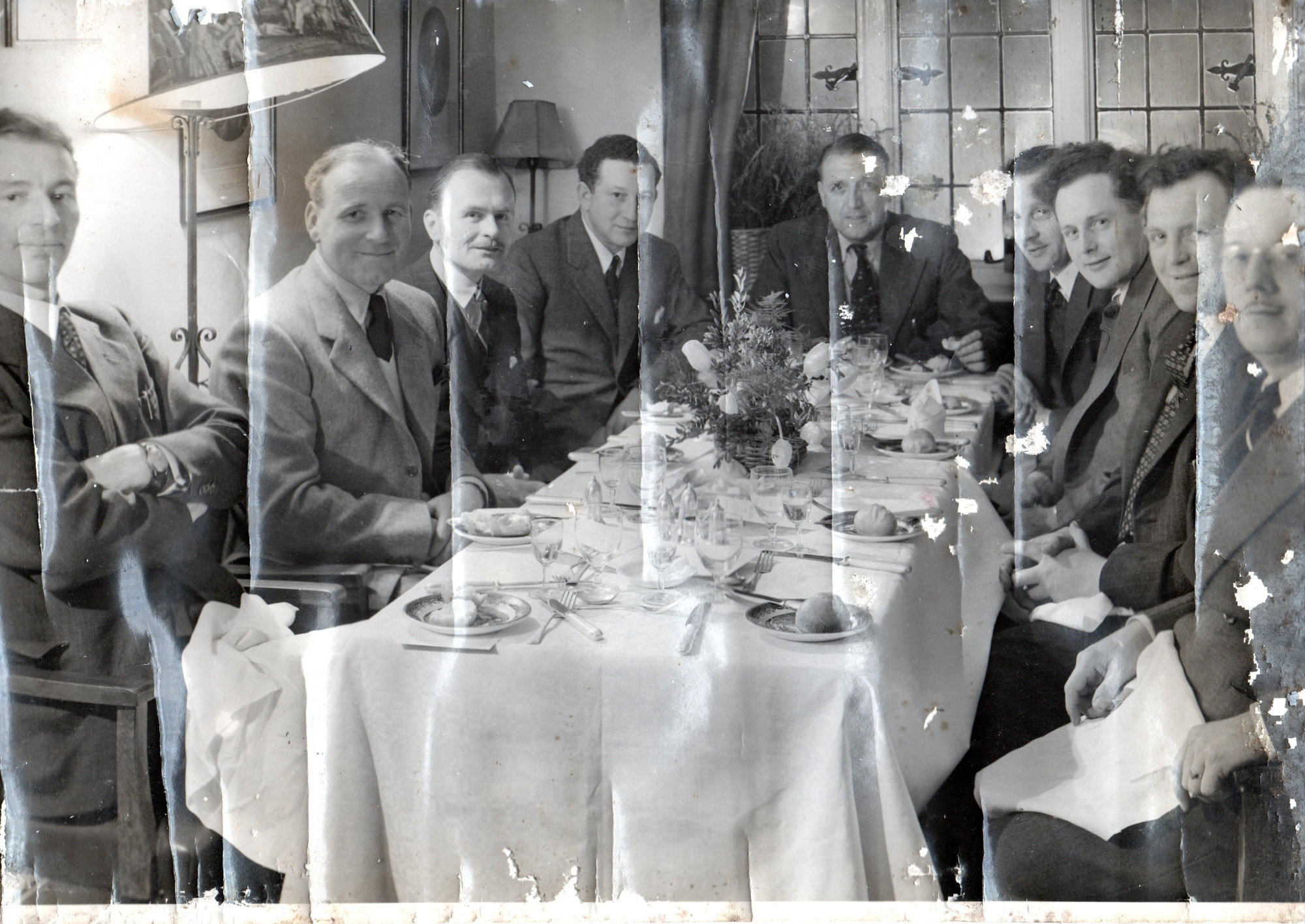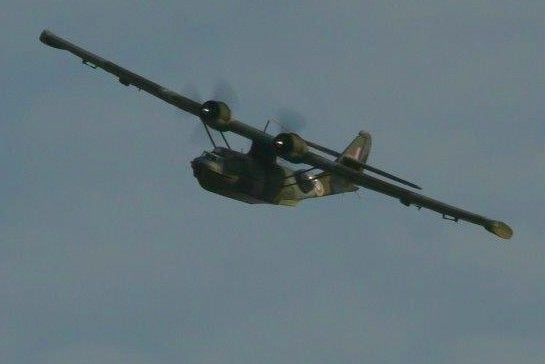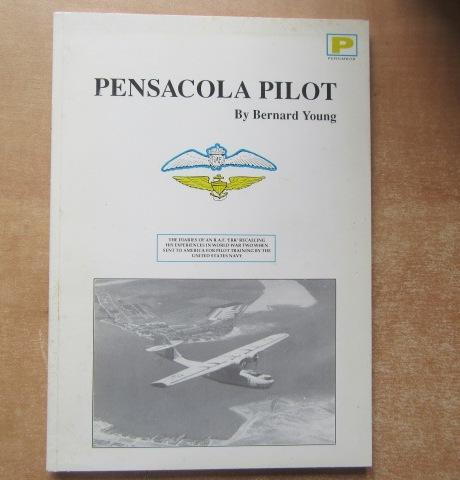WW2 RAF Pensacola USA Training
Thread Starter
Join Date: Aug 2019
Location: Suffolk
Posts: 16
Likes: 0
Received 0 Likes
on
0 Posts
WW2 RAF Pensacola USA Training
I am researching and writing about a late friend of mine who, in 1943 - 1944, went to the Pensacola Naval Base and did flight training on the Catalina flying boat and subsequently flew Catalina's in the middle east in the last years of the war.
Can anyone tell me anything about Catalina flight training; I have contacted the Pensacola Naval Base archives but they cannot help.
Can anyone tell me anything about Catalina flight training; I have contacted the Pensacola Naval Base archives but they cannot help.
I am researching and writing about a late friend of mine who, in 1943 - 1944, went to the Pensacola Naval Base and did flight training on the Catalina flying boat and subsequently flew Catalina's in the middle east in the last years of the war.
Can anyone tell me anything about Catalina flight training; I have contacted the Pensacola Naval Base archives but they cannot help.
Can anyone tell me anything about Catalina flight training; I have contacted the Pensacola Naval Base archives but they cannot help.
Join Date: Oct 2016
Location: Christchurch
Posts: 74
Likes: 0
Received 0 Likes
on
0 Posts
Sorry to have to interrupt, but the PBY-5A WAS the amphibian version of the Catalina, and in fact many PBY-5A's still survive today precisely BECAUSE they were amphibious, that is they did not have to alight on the sea or a lake if a "land" airfield was available in the vicinity. Operating aircraft off water (salt or fresh) always seems to have been more hazardous than using an airfield (for various reasons), and operating off salt water usually guarantees a shorter life for any aircraft made of metal, or containing metal parts. A good way of obtaining an idea of how pilots were trained to fly this type of aircraft (and broadly applicable to many other larger-sized flying boats) would be to obtain a copy of the RAF Pilots' notes for the type (or an equivalent US Navy booklet). Perhaps other forumites might like to suggest where such publications might be obtained for a reasonable price.
David D
David D
My father also went to Pensacola though he ended up flying Halifaxs on a Met. Reconnaissance Squadron. I believe that after the war there were a few reunions and I believe that this gathering is one of them. It is an old picture that has been rolled up for decades so there are a few lines. Maybe somebody can recognise somebody.


Sorry to have to interrupt, but the PBY-5A WAS the amphibian version of the Catalina, and in fact many PBY-5A's still survive today precisely BECAUSE they were amphibious, that is they did not have to alight on the sea or a lake if a "land" airfield was available in the vicinity. Operating aircraft off water (salt or fresh) always seems to have been more hazardous than using an airfield (for various reasons), and operating off salt water usually guarantees a shorter life for any aircraft made of metal, or containing meta partsl. A good way of obtaining an idea of how pilots were trained to fly this type of aircraft (and broadly applicable to many other larger-sized flying boats) would be to obtain a copy of the RAF Pilots' notes for the type (or an equivalent US Navy booklet). Perhaps other forumites might like to suggest where such publications might be obtained for a reasonable price.
David D
David D
I have found a photo of an earlier reunion. It was taken with a wide angle lens so I have to load it in two bits so there may be a couple of twins.
Edited to add Sidevalve has shot a couple of the twins so that they are in one picture..

Edited to add Sidevalve has shot a couple of the twins so that they are in one picture..

Last edited by Fareastdriver; 7th Jun 2020 at 08:43.
My Maternal Uncle trained at Pensacola as part of the 'Towers Scheme', having done BFTS at Grosse Ile near Detroit. At Pensacola he flew both the PBY-5 and the PBY-5A.
The non-amphibians were flown out of Perido Bay to the west of Pensacola itself. If you look on Google maps you can see the remains of the beaching area (it's now a car park and part of the Blue Angel Recreation Park, Battleship Row). Just to the east you can see the remains of the original NAS Pensacola from where the 5As operated.
My uncle told me that with the non-amphibians, they would taxy in towards the beach, then the groundcrew would attach the external beaching gear such that the aircraft could now taxy out of the water. Unsurpisngly the guys going into the water were all black.
The non-amphibians were flown out of Perido Bay to the west of Pensacola itself. If you look on Google maps you can see the remains of the beaching area (it's now a car park and part of the Blue Angel Recreation Park, Battleship Row). Just to the east you can see the remains of the original NAS Pensacola from where the 5As operated.
My uncle told me that with the non-amphibians, they would taxy in towards the beach, then the groundcrew would attach the external beaching gear such that the aircraft could now taxy out of the water. Unsurpisngly the guys going into the water were all black.
Perhaps other forumites might like to suggest where such publications might be obtained for a reasonable price.

I was able to buy a facsimile copy of Pilots notes at the flying boat museum at Pembroke Dock a few years ago. They may be able to post you a copy, and the South American river also has them. A fascinating read
My Maternal Uncle trained at Pensacola as part of the 'Towers Scheme', having done BFTS at Grosse Ile near Detroit. At Pensacola he flew both the PBY-5 and the PBY-5A.
The non-amphibians were flown out of Perido Bay to the west of Pensacola itself. If you look on Google maps you can see the remains of the beaching area (it's now a car park and part of the Blue Angel Recreation Park, Battleship Row). Just to the east you can see the remains of the original NAS Pensacola from where the 5As operated.
My uncle told me that with the non-amphibians, they would taxy in towards the beach, then the groundcrew would attach the external beaching gear such that the aircraft could now taxy out of the water. Unsurpisngly the guys going into the water were all black.
The non-amphibians were flown out of Perido Bay to the west of Pensacola itself. If you look on Google maps you can see the remains of the beaching area (it's now a car park and part of the Blue Angel Recreation Park, Battleship Row). Just to the east you can see the remains of the original NAS Pensacola from where the 5As operated.
My uncle told me that with the non-amphibians, they would taxy in towards the beach, then the groundcrew would attach the external beaching gear such that the aircraft could now taxy out of the water. Unsurpisngly the guys going into the water were all black.
Join Date: Nov 2015
Location: Paisley, Florida USA
Posts: 289
Likes: 0
Received 0 Likes
on
0 Posts
My uncle told me that with the non-amphibians, they would taxy in towards the beach, then the groundcrew would attach the external beaching gear such that the aircraft could now taxy out of the water. Unsurprisingly the guys going into the water were all black.
Cheers,
Grog
I have no idea I'm afraid, that was his recollection.
Being from UK my Uncle was somewhat shocked by the segregation of the time in the USA, and I think it stuck in his memory.
Being from UK my Uncle was somewhat shocked by the segregation of the time in the USA, and I think it stuck in his memory.
oxenos, I want one of those!
- Ed
- Ed
PBY manuals here.
https://pbycatalina.com/pby-catalina-canso-manuals/
When we went through Pensacola in '67 a PBY fuselage with the skin removed on the starboard side sat in the survival school classroom, room perhaps previously served as a PBY transition I guess.
https://pbycatalina.com/pby-catalina-canso-manuals/
When we went through Pensacola in '67 a PBY fuselage with the skin removed on the starboard side sat in the survival school classroom, room perhaps previously served as a PBY transition I guess.
Join Date: Nov 2015
Location: Paisley, Florida USA
Posts: 289
Likes: 0
Received 0 Likes
on
0 Posts
I have a radio controlled PBY which I fly from the lake behind my house. It's not large (54 inch wing span) and is powered by two electric motors; however, it is a delight to fly and handles like a trainer.
Cheers,
Grog
oxenos, I want one of those!
Apologies for thread drift.
PBY manuals here.
https://pbycatalina.com/pby-catalina-canso-manuals/
When we went through Pensacola in '67 a PBY fuselage with the skin removed on the starboard side sat in the survival school classroom, room perhaps previously served as a PBY transition I guess.
https://pbycatalina.com/pby-catalina-canso-manuals/
When we went through Pensacola in '67 a PBY fuselage with the skin removed on the starboard side sat in the survival school classroom, room perhaps previously served as a PBY transition I guess.
Join Date: Jul 2013
Location: Grimsby
Posts: 43
Likes: 0
Received 0 Likes
on
0 Posts
RogerRB,
If you have not had any success in finding what you need, here are my suggestions for possible contacts and sources:
!) RAF Museum Archive. If you do not have your friend's logbook from Pensacola, there may be some logs that would help you in the Museum's collection. From my experience there, the archive may be able to search their logbook holdings using the search term "Pensacola" to find suitable examples. An appointment for a visit may be necessary.
2) Fleet Air Arm Museum Archive. I have no experience of their archive - but RAF training at Grosse Ille and Pensacola, etc., came under the "Towers Scheme" and was funded via the U.S. Navy. The F.A.A. were major beneficiary of the Towers Scheme and may have useful holdings - Course lists, etc.
3) The Catalina Society - operators of the Duxford based G-APBYA. The editor of society's newsletter & website is a great source of Catalina information and may know something of the Pensacola training programme..
4) "British Naval Aviation in World War II." by Gilbert S. Guinn & G.H. Bennett. A very good book on the "Towers Scheme" overall.. There are several pages relating to flying boat training at Pensacola.
5) You will find there is an address of a British Pensacola Veterans at British Veterans Organizations
I am not sure if this society still functions - many such veterans associations have now disbanded due to the age of the membership. Their resources may be in the hands of one of the descendants or may have been lodged with such as the RAF Museum.
Hope this helps, M-62A3
If you have not had any success in finding what you need, here are my suggestions for possible contacts and sources:
!) RAF Museum Archive. If you do not have your friend's logbook from Pensacola, there may be some logs that would help you in the Museum's collection. From my experience there, the archive may be able to search their logbook holdings using the search term "Pensacola" to find suitable examples. An appointment for a visit may be necessary.
2) Fleet Air Arm Museum Archive. I have no experience of their archive - but RAF training at Grosse Ille and Pensacola, etc., came under the "Towers Scheme" and was funded via the U.S. Navy. The F.A.A. were major beneficiary of the Towers Scheme and may have useful holdings - Course lists, etc.
3) The Catalina Society - operators of the Duxford based G-APBYA. The editor of society's newsletter & website is a great source of Catalina information and may know something of the Pensacola training programme..
4) "British Naval Aviation in World War II." by Gilbert S. Guinn & G.H. Bennett. A very good book on the "Towers Scheme" overall.. There are several pages relating to flying boat training at Pensacola.
5) You will find there is an address of a British Pensacola Veterans at British Veterans Organizations
I am not sure if this society still functions - many such veterans associations have now disbanded due to the age of the membership. Their resources may be in the hands of one of the descendants or may have been lodged with such as the RAF Museum.
Hope this helps, M-62A3
PBY-5 and -5A Manuals can be read here, but downloading requires registration and a payment :-
https://www.avialogs.com/search-resu...s&word=UEJZLTU
We had a USAF War Studies Instructor at Cranwell at the start of the 60's. He said that the PBY took-off at 90, flew at 90, and alighted at 90. Methinks he may be outed by close study of these manuals as having been somewhat economical with the truth...
https://www.avialogs.com/search-resu...s&word=UEJZLTU
We had a USAF War Studies Instructor at Cranwell at the start of the 60's. He said that the PBY took-off at 90, flew at 90, and alighted at 90. Methinks he may be outed by close study of these manuals as having been somewhat economical with the truth...
We had a USAF War Studies Instructor at Cranwell at the start of the 60's. He said that the PBY took-off at 90, flew at 90, and alighted at 90. Methinks he may be outed by close study of these manuals as having been somewhat economical with the truth..
Graph suggests endurance speed at all weights of below 80 kts, but text says "lowest speed at which the aircraft can be comfortably flown; at light loads this will be about 80 knots I.A.S."




